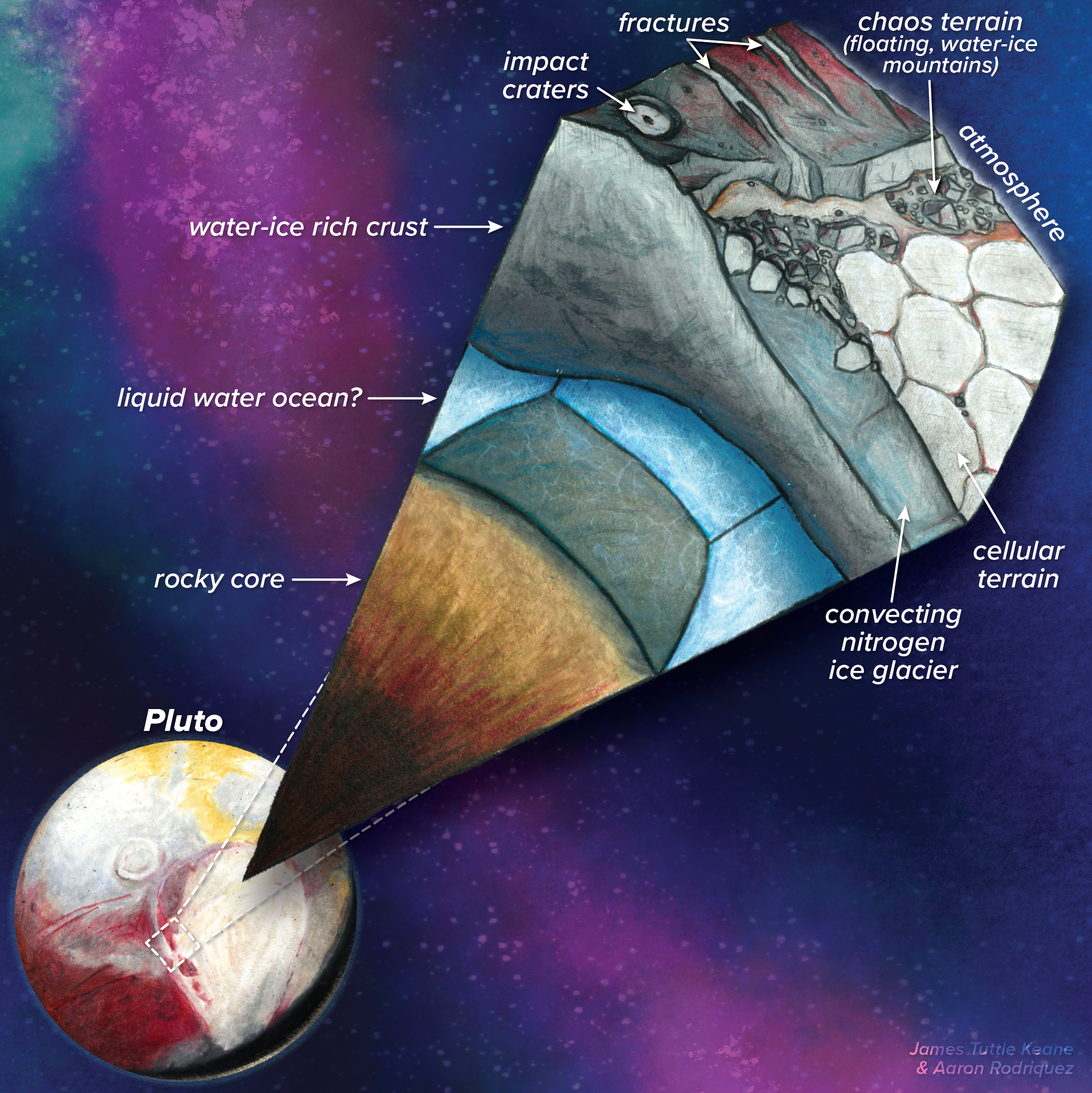Pluto
The Solar System’s Ninth Planet?
Pluto was first spotted as a dot moving on photographic plates taken in 1930 by Clyde Tombaugh at the Lowell Observatory in Flagstaff, Arizona. It is just one of tens of thousands of small, ice-rich bodies called Trans-Neptunian Objects (TNOs) whose orbits take them far beyond Neptune.
Frozen But Not Dead
Pluto’s mountains, craters, and plains are formed not of rock, but of ices like nitrogen, which are normally gasses on Earth. One of the most striking features of Pluto’s ever-changing surface is the Sputnik Planitia, a heart-shaped patch of nitrogen ice. This patch of ice churns on geologic timescales as heat moves through the region. In 1989, scientists from the University of Arizona were instrumental in discovering Pluto's tenuous atmosphere, which is not tightly held to its surface due to Pluto’s weak gravity. As Pluto moves through its eccentric orbit, the atmosphere expands and contracts, causing it to change with the surface temperature. Although comets occasionally crash into Pluto and leave craters, the planet’s geologically active surface allows the icy walls of the craters to relax over time. The atmosphere continually deposits new layers of ice to the surface, which work together to resurface the planet. Over time, the craters are slowly erased, leaving a relatively smooth surface.
University of Arizona Legacy
Pluto is one of hundreds of thousands of TNOs found in the Kuiper Belt, a region of the outer solar system named after the founder of the University of Arizona’s Lunar and Planetary Laboratory, Gerard P. Kuiper. LPL Regents Professor Renu Malhotra discovered that the current orbits of TNOs in the Kuiper Belt are the result of orbital migration of the giant planets in the ancient solar system.
QUICK FACTS
| MASS: | 1.3x1022 kg | 0.2% that of Earth |
| DIAMETER: | 2,376 km | 19% that of Earth |
| SURFACE GRAVITY: | 0.62 m/s2 | 6% that of Earth |
| AVG. SURFACE TEMPERATURE: | -406° F | -243° C |
| AVG. DISTANCE TO SUN: | 5.9 billion km | 39 au |
Pluto's surface contains features like fractures, craters and cellular terrain characteristic of the Sputnik Planum region (which resembles a heart from far away). Scientists have used the characteristics of these surface features, along with other data, to start to infer the properties of the layers below. One possibility is that Pluto has a liquid water ocean underlying the icy surface. One of the illustrators for the Arizona Scale Model Solar System, Dr. James Keane, studied the interior of Pluto as part of his Ph.D. work at the Lunar and Planetary Laboratory.


